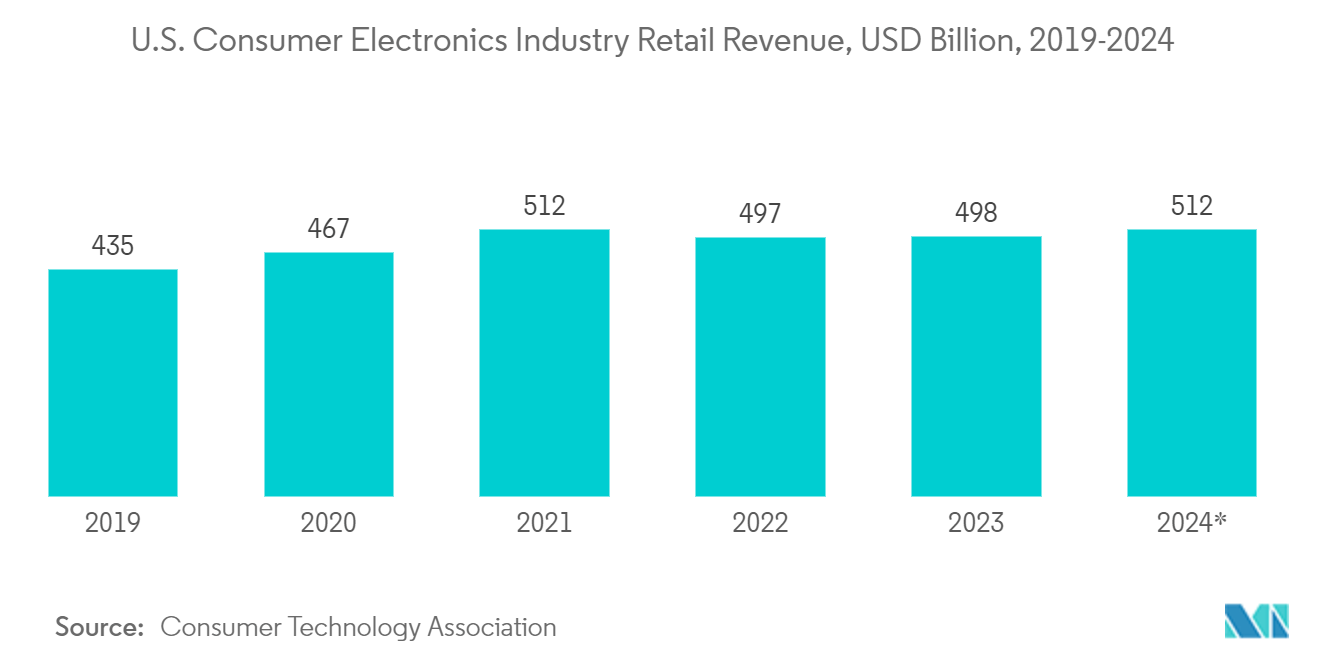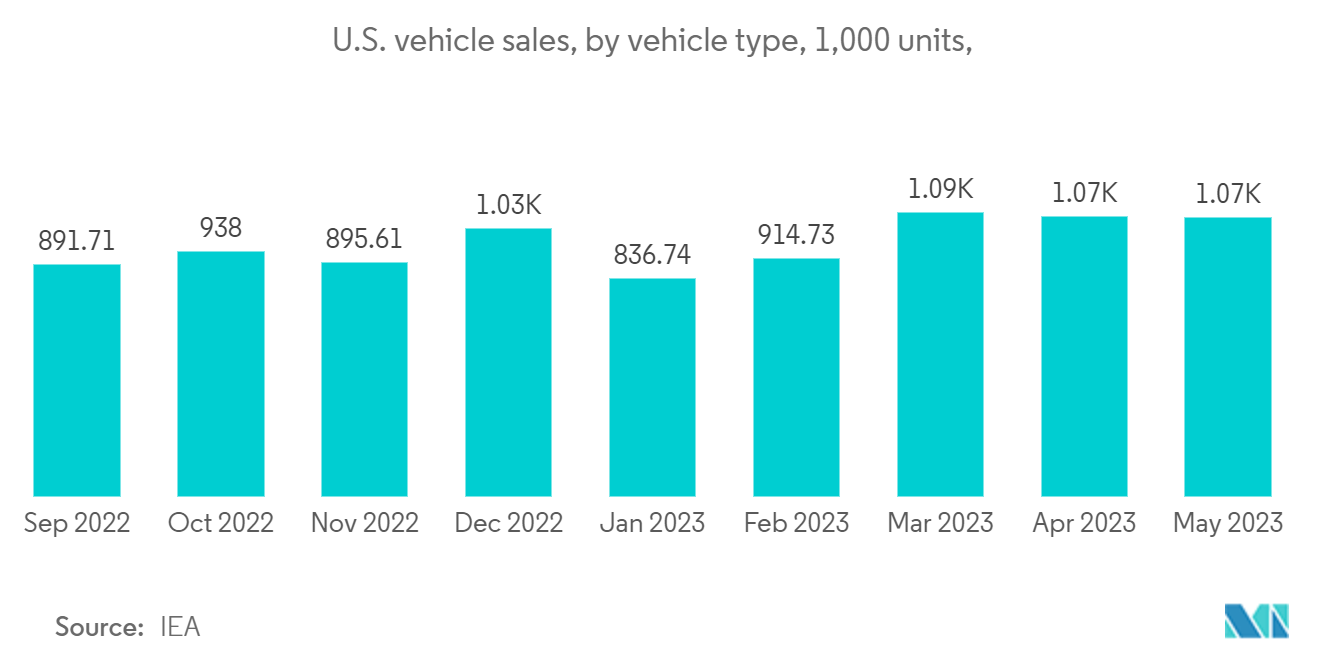Market Trends of Americas Sensor Industry
Increasing Use of Smartphones and Other Electronic Devices to Bolster Market Growth
- The Americas' sensor market is expected to register high growth over the forecast period. The growth is attributed to rising demand for smartphones, consumer electronics, and other devices. With the rising adoption of smartphone devices in the region, the demand for sensors is expected to increase simultaneously in the market.
- The increasing adoption of light sensors in consumer electronics is expected to boost the demand for light sensors in the market. Light sensors are majorly used as automatic street light systems, automatic brightness control in mobile, and security devices in offices and homes. Light sensors in electronic devices indicate the intensity of artificial light or daylight, thus making them useful for various industrial and consumer applications.
- The development of numerous industries in the area where sensors are used is another factor boosting their demand. For instance, sensors for health applications are anticipated to experience strong demand due to ongoing concerns about population health in the United States owing to the rising rate of chronic diseases. One of the most critical applications driving the need for sensors is the growing uptake of wearable health devices for patient monitoring.
- The rising government efforts to promote 5G adoption are expected to drive the market. For instance, Ericsson projects that by 2030, revenues from improved mobile broadband will total over USD 28.4 billion in the 5G market.
- The growing consumer electronics industry in the Americas is one of the major factors driving the market's growth. According to recent projections by the Consumer Technology Association (CTA), the US consumer technology industry was expected to generate over USD 505 billion in retail sales in 2022, growing by 9.6% compared to 2020-2021. According to the organization, there is strong demand for sensors. Smartphones, consumer electronics, healthcare devices, and streaming services may help generate a significant portion of the projected revenue.

United States to Hold Significant Market Share
- The sensors market in the Americas is dominated by the United States, which is expected to hold a significant global share and boom in the future due to the growing popularity of IoT-based devices, consumer wearables, and sensor applications in various industries.
- The leading causes of death in the United States are chronic diseases like diabetes, cancer, and cardiovascular disease. Heart disease, cancer, stroke, chronic obstructive pulmonary disease, and diabetes account for over two-thirds of all fatalities. The CDC estimates that people with chronic diseases and mental health conditions account for 90% of the USD 3.8 trillion annual healthcare costs. Such factors are driving the need for wearable trackers and the nation's investments in the healthcare sector. Wearable devices offer an alternative pathway to clinical diagnostics by using various chemical, physical, and biological sensors to track and analyze physiological (biophysical and biochemical) information in real time and in a non-invasive or minimally invasive manner.
- The region has gradually begun to favor electric vehicles over conventional vehicles. Sensors are crucial components of the electronic control system in cars. The region's growing EV market is anticipated to present opportunities for sensor technology.
- For instance, according to Cleantechnica, the US market for electric vehicles has grown significantly over the past two years, rising from about 2.2% of US EV sales in Q3 2020 to 6.1% in Q3 2022. The growing investments in the automotive industry to meet the demand for EV technology are also anticipated to increase the demand for sensors due to their widespread use in the automotive sector.
- The government is taking several initiatives to advance the region's semiconductor industry capabilities. For instance, in August 2022, the country announced CHIPS Act 2022, which aims to increase the competitiveness of US technologies and semiconductor production and allocate resources and subsidies to help the United States deal with the semiconductor shortage. As a result, to meet the demand, many market participants continually invest in the market studied.


